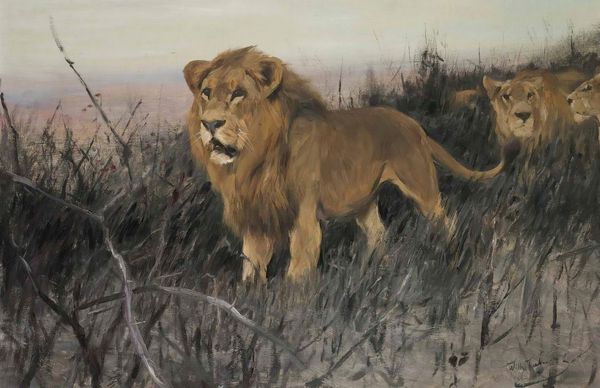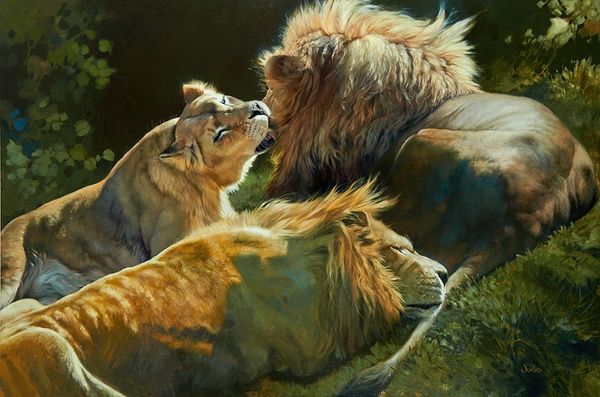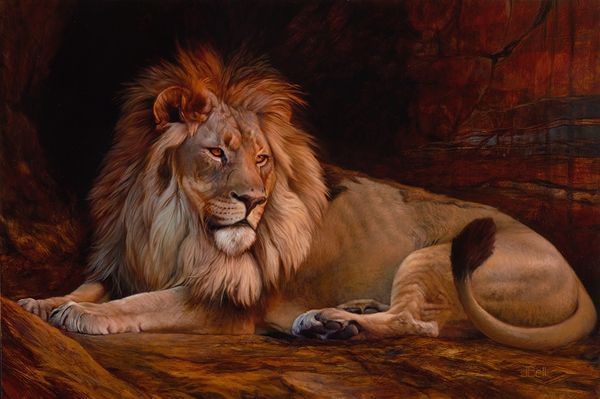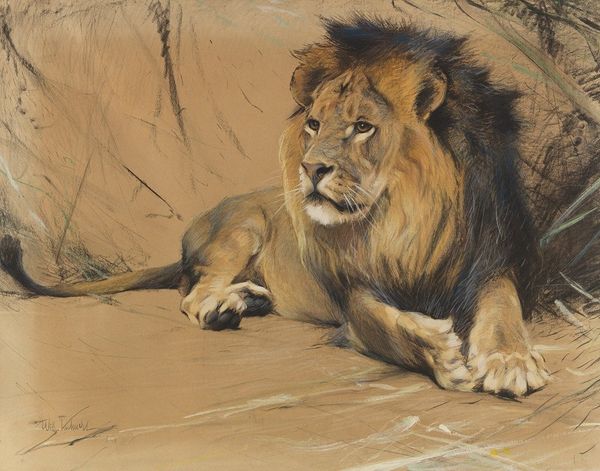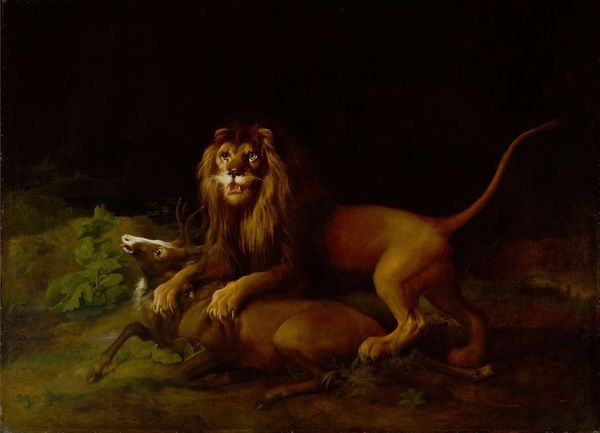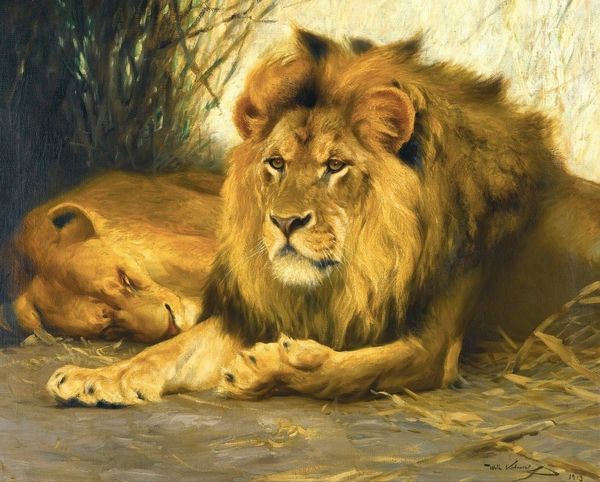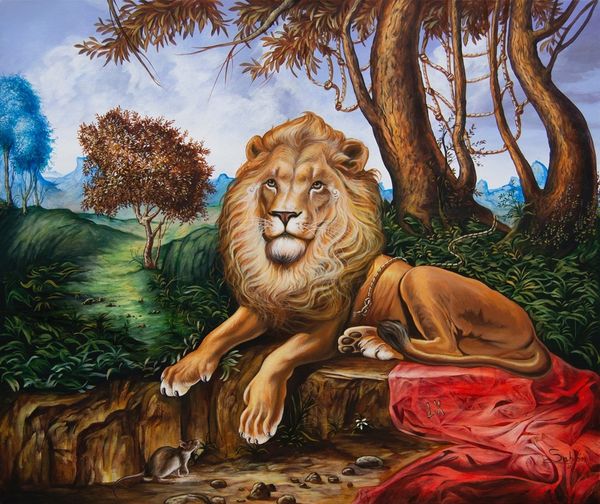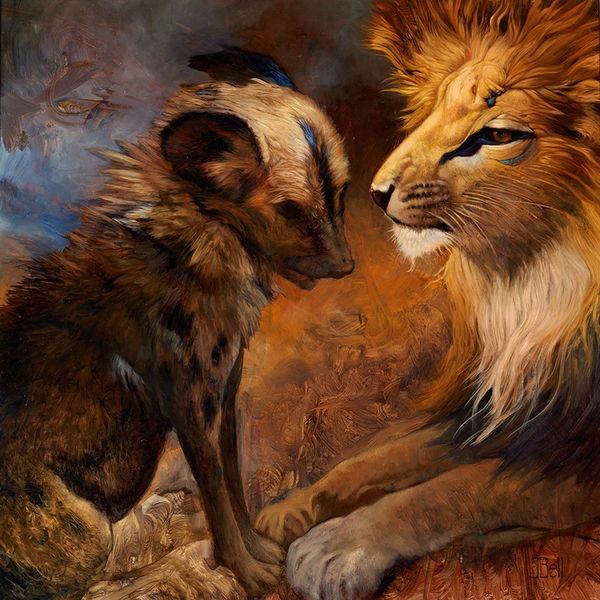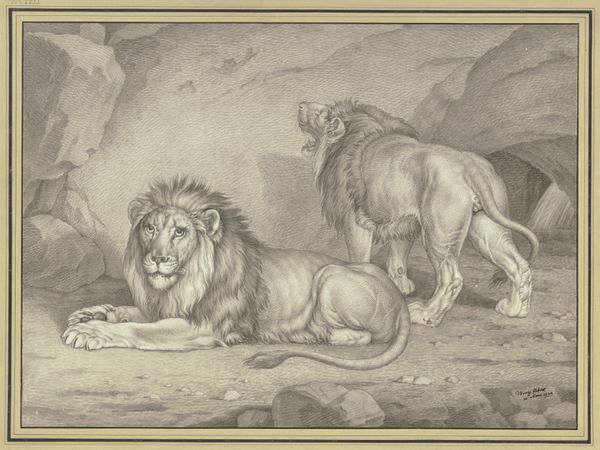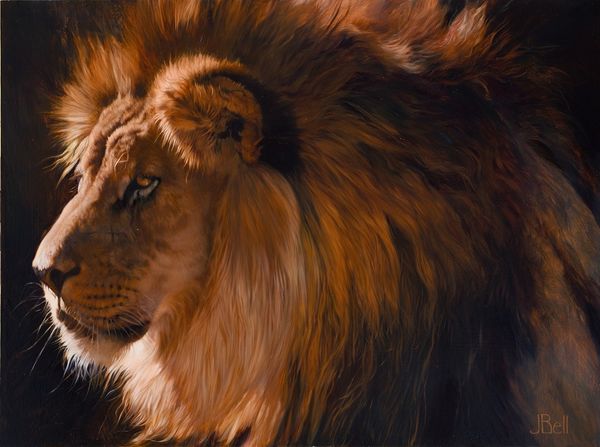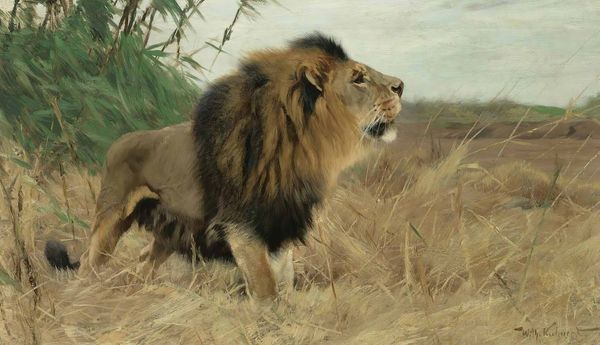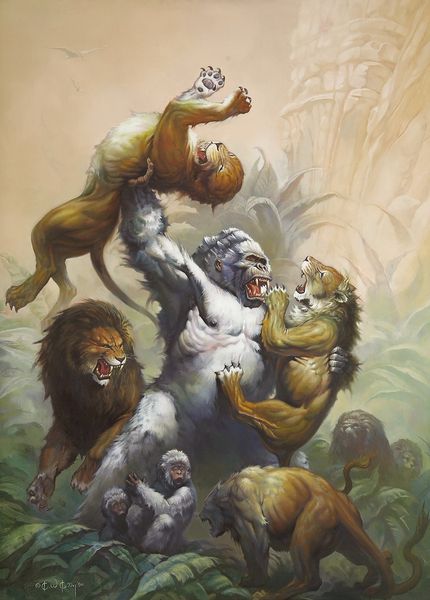
Copyright: Public Domain: Artvee
Curator: What strikes me first about this artwork is its raw intensity. It really evokes a sense of panic. Editor: I see what you mean. This is Wilhelm Kuhnert's "Lion Hunt", created around 1894. He captured it using charcoal on paper. The tension is definitely palpable; you can almost feel the hot breath of the lion. But for me, it raises questions about the production of this type of image, a European artist representing such a scene. Curator: Absolutely. Kuhnert, known for his realism, often traveled to Africa to sketch wildlife. "Lion Hunt" provides insight into how Europeans perceived encounters between humans and wild animals, highlighting human dominance and romantic notions of danger. The way the indigenous figures are depicted adds another layer to the colonial gaze. Editor: The making is definitely steeped in that colonial history. Look at the detail in the lion’s fur versus the relative sketchiness of the landscape around it. Kuhnert was trained in the traditions of academic realism; a clear emphasis here on rendering the lion with such apparent accuracy while reducing the human figures to relatively simpler forms makes the artistic and socio-political hierarchy rather plain. Also, I am intrigued by the surface qualities of the charcoal itself – the way it captures the textures of fur and skin, almost like a primal connection between material and subject. Curator: I agree, that contrast in rendering really reinforces power dynamics of the time. He captures the drama, the presumed triumph over nature… These depictions shaped European understanding of Africa and its inhabitants. But let’s not forget Kuhnert's influence on conservation. His lifelike representations of wildlife made an argument for their preservation even within an imperial framework, of course. Editor: A complex figure, no doubt, creating compelling images, with significant material impact, steeped in problematic power structures. I keep thinking about where this charcoal came from, who made it, and under what conditions it came to be available for this image-making project! Curator: Indeed. "Lion Hunt" becomes a fascinating artifact that urges us to examine art's historical role, and invites ongoing discussions about colonialism, representation, and preservation. Editor: Yes, seeing the artist's process so intertwined with the larger material processes of extraction and representation gives a richer, if unsettling, meaning to the piece.
Comments
No comments
Be the first to comment and join the conversation on the ultimate creative platform.
